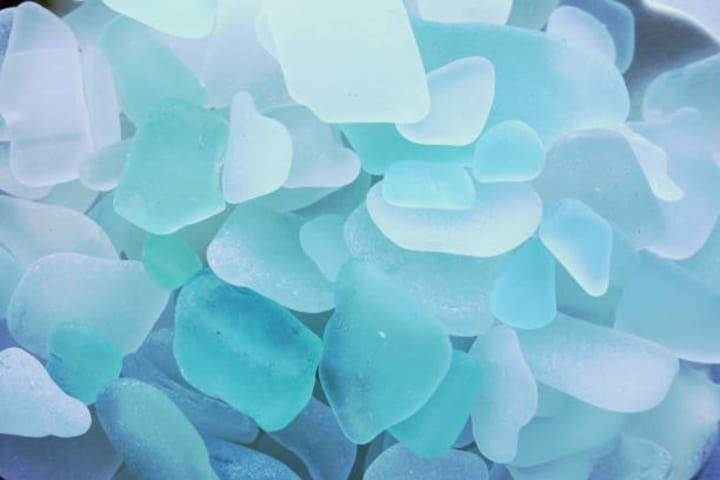Where Does Sea Glass Really Come From?
Have you ever found sea glass and thought to yourself, what and where does this really come from?

Sea glass is a fascinating and beautiful gem that can be found washed up on shorelines all around the world. Many beachcombers and collectors are drawn to its smooth, colorful, and weathered appearance. But have you ever wondered how sea glass gets on the beach, how old it is, and where it comes from? In this article, we will explore these questions and more.
How Does Sea Glass Wash Up on the Beach?
Sea glass is created when pieces of glass are broken and then tumbled in the ocean for many years, becoming smooth and frosted by the waves and sand. The glass can come from a variety of sources, including bottles, jars, and even old car headlights. Over time, the saltwater and waves work to smooth and round the edges of the glass, turning it into the beautiful and unique pieces of sea glass that can be found on beaches around the world.
Sea glass is typically found on beaches where there is a strong wave action and where the glass has been exposed to the elements for a long period of time. Some beaches are more likely to have sea glass than others, depending on their location and the history of the area. For example, beaches near old glass factories, shipwrecks, or areas where there was a lot of ocean traffic in the past are more likely to have a lot of sea glass.

How Old is the Sea Glass That is Found on the Shore?
The age of sea glass can vary greatly, depending on how long the glass has been tumbling in the ocean. Some pieces of sea glass can be as old as several hundred years, while others may have only been in the ocean for a few decades.
According to Richard LaMotte, author of "Pure Sea Glass: Discovering Nature's Vanishing Gems," the age of sea glass can be determined by the color and thickness of the glass. Older sea glass tends to be thicker and has a more rounded appearance, while newer sea glass is thinner and sharper. The color of the glass can also be an indicator of age, as older glass tends to be a deeper shade of green or blue.

What is the Process of Sea Glass and Where Does it Come From?
The process of creating sea glass begins when glass is broken and discarded into the ocean. The glass is then tumbled by the waves and sand for many years, smoothing and rounding the edges of the glass. The saltwater and sand also work to create a frosted appearance on the glass, which gives it its unique and beautiful appearance.
Sea glass can come from a variety of sources, including bottles, jars, and even old car headlights. The glass can be from any time period, from ancient Roman glass to modern-day beer bottles. Some collectors even search for sea glass that has a unique history, such as pieces that may have come from old shipwrecks or lost treasures.
Sea glass can be found all around the world, but some of the best places to search for sea glass include the beaches of Hawaii, Bermuda, and England. Beaches near old glass factories or areas with a lot of ocean traffic in the past can also be good places to search for sea glass.
In conclusion, sea glass is a beautiful and unique gem that is created through the natural process of ocean waves and sand. It can be found on beaches all around the world, and its age and origin can vary greatly. Whether you are a beachcomber or a collector, sea glass is a fascinating gem that has captured the imagination of people for generations. So the next time you take a stroll on the beach, keep an eye out for these vanishing gems and marvel at the natural beauty that surrounds us.
About the Creator
Aaron Volf
Discover a new perspective on life through my eyes. With a unique voice, attention to detail, and a passion for exploring new ideas, my writing will leave you inspired, informed, and eager for more.
Enjoyed the story? Support the Creator.
Subscribe for free to receive all their stories in your feed. You could also pledge your support or give them a one-off tip, letting them know you appreciate their work.






Comments
There are no comments for this story
Be the first to respond and start the conversation.